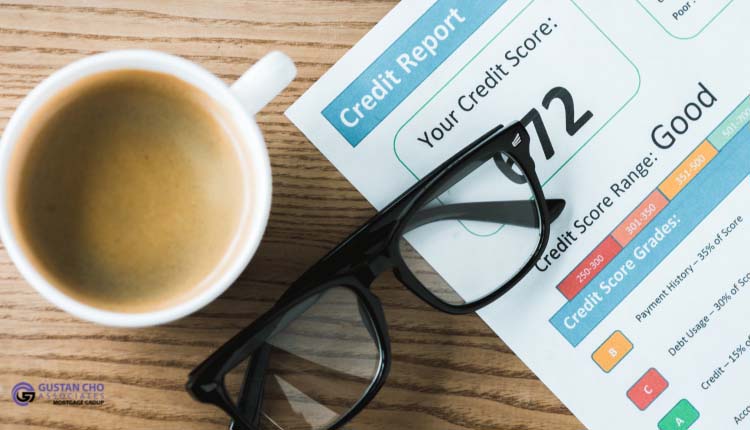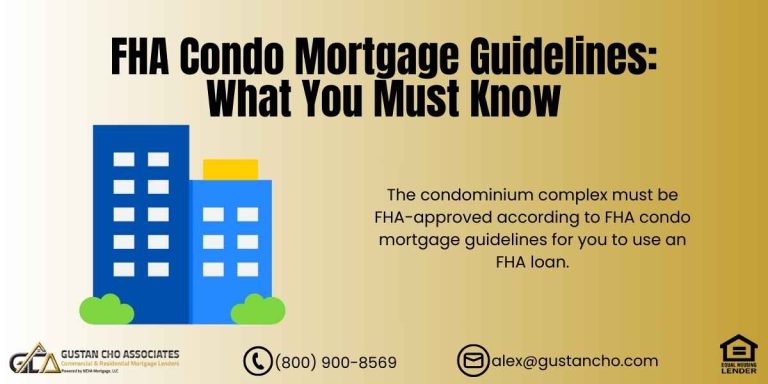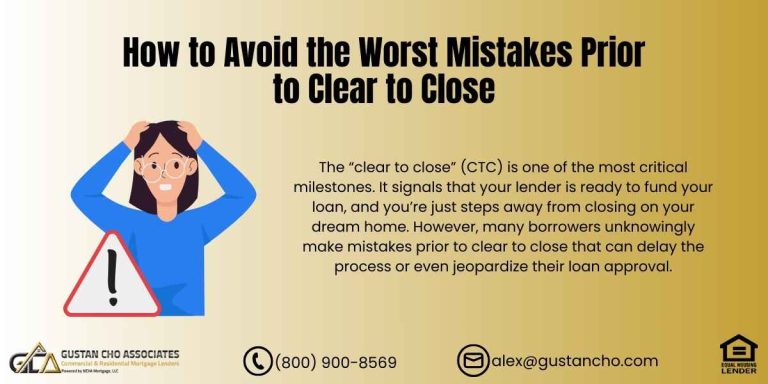This guide covers mortgage rate adjustments (LLPAs) for higher-risk borrowers. The lower your credit scores, the higher your mortgage rates. Rate adjustments, also called Loan-Level Pricing Adjustments, are pricing adjustments either added to or discounted from mortgage rates. John Strange, a senior mortgage loan originator at Gustan Cho Associates, explains mortgage rate adjustments, commonly referred to as loan-level price adjustments as follows:
Mortgage rate adjustments are commonly referred to as loan-level price adjustments. Loan-level -price adjustments, or LLPAs, are extra fees or higher interest rates that mortgage lenders add when they think a loan carries more risk.
Fannie Mae, Freddie Mac, and other big players decide these adjustments to protect themselves from possible losses if a borrower does not pay the loan back. In this guide, we break down what LLPAs are, why they matter, what factors change their size, how they hit higher-risk borrowers, and what steps people can take to lower the costs. In the following paragraphs, we will cover mortgage rate adjustments for higher-risk borrowers.
What are Mortgage Rate Adjustments
LLPAs work as risk-based pricing moves, showing up either as a one-time fee at closing or baked into a slightly bigger interest rate. Their main job is to soften the blow of possible defaults so lenders do not lose more than they can handle. By doing this, Fannie Mae and Freddie Mac stayed stable, and the housing market stayed steady. The moves also make pricing fairer because they pair costs with how likely someone is to miss payments; that way, careful borrowers do not cover for riskier ones. For instance, a borrower could hand over a small percentage of the total loan as an upfront fee or take a higher rate and pay it slowly over the life of the mortgage. Dale Elenteny, a senior mortgage loan originator at Gustan Cho Associates explains mortgage rate adjustments for higher-risk borrowers:
Several things help lenders decide whether a borrower will pay loan-level price adjustments, or LLPAs, and how much the fee will be. The biggest single influence is the borrower’s credit score.
Scores below 620 show a track record of trouble, so those borrowers almost always face sizeable LLPAs; on the flip side, a score above 740 usually means few or even zero adjustments. The loan-to-value, or LTV, ratio matters next. LTV compares the loan amount to the home’s current value, and an LTV over 80 percent, especially with only a small down payment, signals greater risk and leads to heftier LLPAs. Borrowers’ debt-to-income, or DTI, ratio also counts. When DTI climbs past 43 or, in some cases, 50 percent, lenders worry the borrower will struggle, so they add a higher adjustment. What the loan is for can change the fee, too. Cash-out refinances, in which borrowers pull equity from the house, carry extra risk compared to loans for buying a home, so they often attract a small additional LLPAs.
Higher Risk Doesn’t Mean Higher Rates Forever
Learn how rate adjustments work—and what you can do to qualify for better terms.
Mortgage Rate Adjustments on Occupancy Type
Occupancy type is another big one; primary homes usually get lower LLPAs than second houses or rentals because lenders see those as riskier. Loan term, private mortgage insurance, and whether the loan is adjustable-rate also matter. Lenders shape the LLPAs by following Fannie Mae and Freddie Mac rules, stacking adjustments for every risk. Alex Carlucci, a senior loan officer at Gustan Cho Associates gives the following example on mortgage rate adjustments:
For example, a borrower with a low credit score and a high LTV could have an LLPA of a few percentage points. They can either cough up the fee once at closing—for instance, a 1.5% LLPA on a $300,000 loan would be $4,500—or take a slightly higher interest rate, maybe about 0.375%, though the exact bump depends on the lender and term.
These costs hit higher-risk borrowers hardest, especially those with weaker credit, small down payments, or heavy debt loads. Extra fees can add up to thousands of upfront or higher monthly bills, squeezing affordability and possibly pushing some out of eligibility. First-time or low-income buyers often feel the pinch the most since they tend to have those riskier profiles, putting up extra barriers to homeownership.
How to Avoid Mortgage Rate Adjustments
Home buyers can take several practical steps to lower loan-level price adjustments (LLPAs). First, boosting a credit score above 740 helps; paying off small debts, always making payments on time, and fixing mistakes on the credit report make a quick difference. A larger down payment trims the loan-to-value (LTV) ratio, and that move cuts LLPAs, too, so many first-time buyers seek down-payment-assistance programs.
Non-government-sponsored enterprise (GSE) loans, including FHA and VA options, often have pricing rules that suit higher-risk borrowers. Finally, partnering with a mortgage broker can help buyers spot the most favorable path forward.
Government-backed loans like FHA, VA, and USDA still have risk-based fees, even though they don’t use the traditional LLPAs in conventional mortgages. FHA loans charge an upfront premium and an ongoing monthly mortgage insurance fee. VA loans add a funding fee that varies based on how much cash the borrower puts down and their service record. USDA loans carry a guarantee fee as well. Because these programs accept higher-risk borrowers, they can be easier to get, but the extra costs still matter.
How Does Mortgage Rate Adjustments Affect Rates to the Borrower
In short, LLPAs raise borrowing costs for people lenders see as riskier, and that extra charge is a safeguard for the lender. By learning what triggers those adjustments and improving credit scores or saving for a bigger down payment, future homeowners may lower their overall expenses and make the mortgage process smoother. It’s always smart to team up with a well-informed lender or mortgage broker who can walk people through the fees, explain why they matter, and help them find the right loan product.
For conventional loans, credit score tiers start at the following levels:
- 620 FICO
- 640 FICO
- 660 FICO
- 680 FICO
- 700 FICO
- 720 FICO
- 740 FICO
Reducing the debt-to-income (DTI) ratio by paying down loans or raising take-home pay also lowers the adjustment. Choosing a primary residence instead of a vacation or rental home avoids the steeper LLPAs tied to investment properties. Because LLPAs vary by lender, shoppers should compare quotes, since some companies may cover certain fees. Marga Jurilla says the following about mortgage rate adjustments:
Credit Scores And Mortgage Rate Adjustments
Each level of these credit score tiers has different Loan Level Pricing Adjustments.
- For example, top par mortgage rates will be available for a prime borrower with a credit score of 740 FICO or higher
- That borrower will have premium low par conventional rates
- As the borrowers’ credit scores are lower, their mortgage rates will be higher due to rate adjustments
- In this example, a borrower with a credit score of 620 FICO can only qualify for a much higher conventional mortgage rate
- It can be as much as 2 points for the same loan just because they have lower credit scores
As of July 2025, the Federal Housing Finance Agency is updating the LLPA schedule again, adding waivers for some first-time buyers. Higher interest rates and climbing home prices make those fees hit harder than ever. To stay informed, borrowers can check the latest rules directly from Fannie Mae, Freddie Mac, or the Consumer Financial Protection Bureau. Credit and credit scores are important regarding mortgage qualification and getting the best possible rates.
Understand Why Your Rate Is Higher—And How to Fix It
Credit score, loan type, or property risk? We’ll break down what’s affecting your rate and how to improve it.
How Loan-to-Value Affects Mortgage Rate Adjustments
Another factor affecting rates is that lenders can penalize borrowers regarding the loan-to-value on conventional loans. For example, borrowers who have 97% loan-to-value, 95% loan-to-value, 80% loan-to-value, 75% loan-to-value, and 70% loan-to-value conventional mortgage loans. Michael Gracz, a senior loan originator at Gustan Cho Associates says the following about mortgage rate adjustments:
Property type also shapes the adjustment: single-family houses usually get the best treatment, while condos and multi-units face larger fees because of homeowner association costs and other added hazards. Finally, any loan above the conforming limit, roughly $805,600 for most single-family homes in 2025, may trigger one more level of LLPAs.
The lower your loan-to-value, the less your rate adjustments are. Homebuyers who put down 5% will get better mortgage rates than a borrower who puts only a 3% down payment. A person who puts down 25% down payment on a home purchase will get far fewer rate adjustments than someone who puts down 20% on a home purchase.
Mortgage Rate Adjustments on Single Family Versus Multi-Unit Properties
Borrowers who purchase a two—to four-unit residential property will be hit with rate adjustments. They will definitely get a higher mortgage rate than someone who purchases a single-family home. The pricing adjustments can be quite steep, sometimes as much as a full percentage point.
Mortgage Rate Adjustments on Location Of Property
Certain mortgage lenders will give a positive or negative mortgage rate adjustment if you are in certain states. Depending on the lender, there might be a lender that can give a 0.25% mortgage rate adjustment credit if you live in certain states. On the flip side, you can get penalized a certain percentage amount if borrowers reside in certain states. For example, a certain lender may hit a borrower with a 0.625% mortgage rate adjustment if the borrower lives in certain states.
- Related> Improving Credit Scores To Qualify For Mortgage
- Related> Mortgage Rates And Credit Scores
- Related> Mortgage With 580 Credit Scores
Get a Mortgage That Works—Even With a Risk Adjustment
We offer flexible options and transparent terms for higher-risk borrowers. No overlays.








